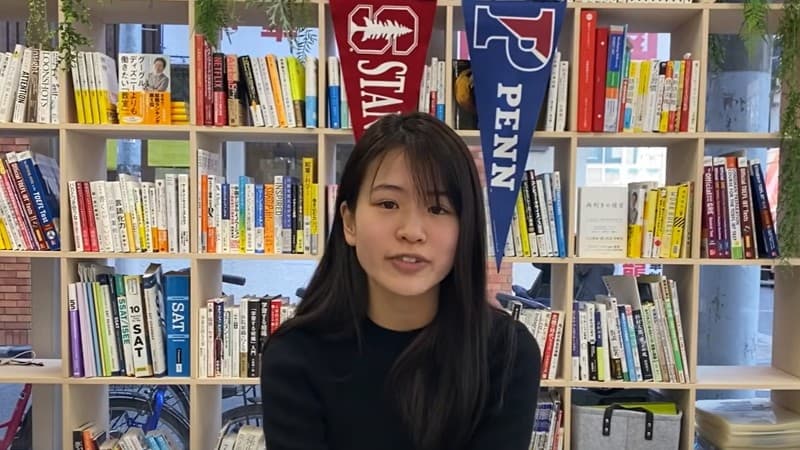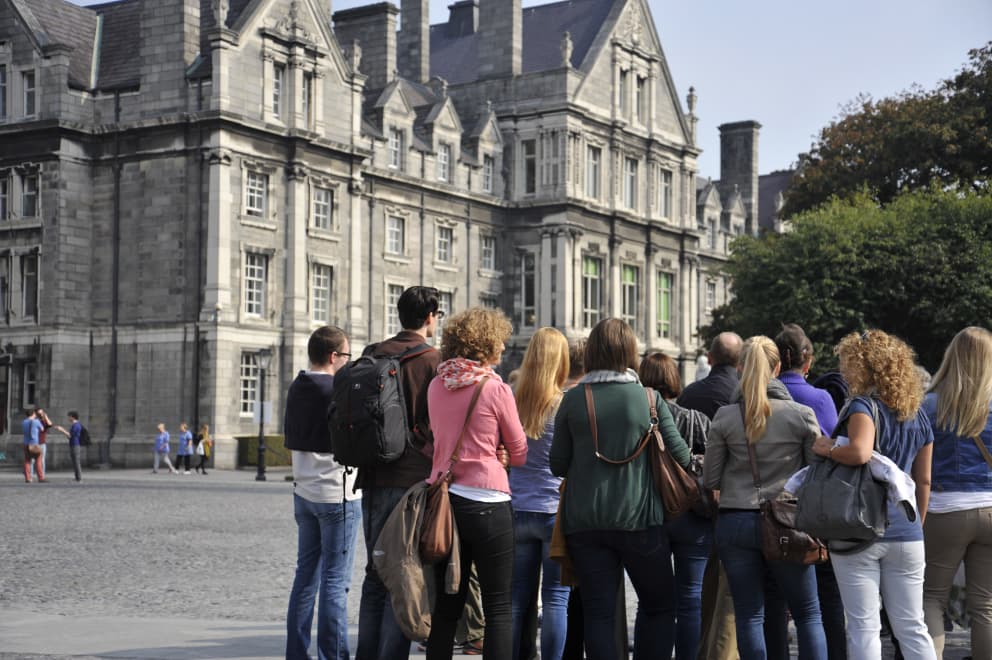Navigating College Applications: Early Action, Early Decision, and Regular Decision Explained

Summary
This post explains the differences between Early Action, Early Decision, and Regular Decision application options. Early Action and Early Decision options may boost your chances for success in competitive admissions, but applying early can involve some downsides too. This post explains each option, including their pros and cons, and helps students understand how to chart their own best application strategy.
The college application process is an exciting, albeit potentially overwhelming, journey. Application timelines and deadlines make the process particularly stressful for some students.
According to Tim Renick, Senior Vice President for Student Success at George State University, and Lindsay Page, Associate Professor for the University of Pittsburgh School of Education, “admissions lingo” in itself gets so complicated it can hinder many students’ efforts during crucial stages of their college journey.
If you’re not familiar with application options, there are three different types of application timelines and policies used by hundreds of colleges and universities: Early Action (EA), Early Decision (ED), and Regular Decision (RD).
In some circumstances, Early Action and/or Early Decision options may significantly boost your chances for success in a very competitive admissions landscape. But, understanding the different options is crucial when you choosing your own best strategies and options as an applicant, especially if you’re a student applying to an Ivy League or other highly competitive schools.
Early Action vs Early Decision vs Regular Decision: Overview
Every year many students look ahead to the college application process with limited awareness of alternative application options. As a result, these students may be overlooking options or strategies that could elevate their chances of getting into the schools they’re most excited about.
In fact, hundreds of colleges offer early application options — including many of the best colleges in the US today.
Among more competitive schools in particular, many offer both Early Decision and Early Action options, making it crucial to have a full understanding of the application terrain well before deadlines approach.
For example, choosing one option might dramatically boost your odds for success at your top-choice school, while choosing another path may be a better strategy if you’re casting a wider admissions net.
Now let’s look at each of the three options and their unique characteristics in closer detail and explain crucial differences you need to know about.
1. Early Action (EA)
Definition
Early Action (EA) is a college application process offering applicants the option to apply ahead of the deadline for Regular Decision applicants. You need to apply earlier, but typically it’s an opportunity to receive an admission decision sooner, without any commitment to attend the school if you’re accepted.
Key Characteristics
- Non-binding agreement: If accepted, you're not obliged to enroll.
- Early timelines: Submit your application and receive a decision earlier than RD applicants.
- Application deadlines: Early Action deadlines typically fall around November 1st.
Pros and Cons
- Pros: Receiving an early admission decision can reduce stress; it provides you more time to plan for college.
- Cons: A shorter application window might mean less time to polish your application.
Use-Case Scenario
Imagine you're confident about your current academic and extracurricular record and have identified a few colleges you're keen on. If you’re all ready to apply early, maybe you should. Applying EA means you’re likely to know the school’s decision before the year ends, and with no commitments for accepting the offer. This means you won’t have to wait as long — typically you’ll get notified of admissions decisions between mid-December and mid-January — instead of mid or late spring.


2. Early Decision (ED)
Definition
Early Decision (ED) typically involves agreeing to an admissions commitment. By choosing ED, you can get an edge for admissions. But in return you’re required to promise you’ll attend the school. This means declining all other school offers — and the respective financial assistance offers — if you do get admitted as an ED applicant.
Key Characteristics
- Binding agreement: Acceptance means you must enroll and withdraw all other applications.
- Expressed interest: Shows the college you're certain it's your top choice.
- Application deadlines: ED deadlines, like EA deadlines, typically fall around November 1st.
Pros and Cons
- Pros: Some colleges might have higher ED acceptance rates, so by applying before the ED deadline you would have better odds, statistically at least, of getting admitted —a reward for your timely application and your demonstrated enthusiasm and commitment to the school.
- Cons: The binding nature can complicate financial aid negotiations and it limits your flexibility because you would be required to decline admissions offers from other schools.
Use-Case Scenario
If you've dreamt of one college for years and are certain it's the perfect fit for you, there’s little downside to the commitment you’re making in return for an early decision. And, depending on the school, you might also get the benefit of increasing your chances for acceptance by applying in this early round.
3. Regular Decision (RD)
Definition
Regular Decision is the traditional college application route, typically with an application deadline in the late winter or early spring and a decision letter arriving in mid to late spring.
Key Characteristics
- Non-binding agreement: Like EA, you're not committed if accepted.
- Standard timelines: Longer preparation window, with decisions typically announced in spring.
- Application deadlines: Deadlines for RD range from mid-December to mid-January for most schools.
Pros and Cons
- Pros: More time to bolster your application, gather recommendations, and potentially earn scholarships. Easier to meet application deadlines.
- Cons: Longer wait for decisions and potential for increased competition with a larger applicant pool.
Use-Case Scenario
If you're looking to cast a wide net, want flexibility to compare various college admissions offers or financial assistance offers, or feel you need the first semester of senior year to enhance your application, RD is the way to go.


Comparing EA, ED, and RD
Early Action vs Early Decision vs Regular Decision Overview
| APPLICATION TYPE | DEADLINES | BINDING? | NOTIFICATION TIMELINES |
|---|---|---|---|
| EA | EARLY (November 1st for many schools) | NO | EARLY (Mid-December to Mid-February) |
| ED | EARLY (November 1st for many schools) | YES | EARLY (Mid-December to Mid-February) |
| RD | REGULAR (Typically Mid-December to Mid-January) | NO | LATER (Mid-March to Mid-April) |
Strategic Considerations
Each student's journey is unique. Consider your academic trajectory, emotional preparedness, and college aspirations when choosing among EA, ED, and RD.
If you’re applying to highly competitive schools, find out which ones offer EA or ED options and if they post any information about different acceptance rates for early vs. regular admission applicants.
For top schools where EA or ED applicants have better odds of admissions, even slightly better, it could definitely be a smart move to apply as an EA or ED applicant.
Other considerations could be your readiness as an applicant or the time you need to prepare to start college.
- Applicant Readiness
Admissions experts with the National Association for College Admission Counseling encourage students who need more time to prepare — to improve some grades or finish researching school options — to consider RD as the best option.
In other words, if you don’t have exceptional clarity about your top-choice schools as early application deadlines approach, or just need more time to be able to put forward the best applications possible, EA and ED probably don’t make sense.
- Relocation Timelines
If leaving home for college involves extensive planning and preparation, or if you’re an international student and need time to obtain visas or complete other travel requirements, Early Application and Early Decision are the two options that can give you the clarity you need sooner, benefiting you with a longer runway to get ready for your next steps.
- Competitive Admissions
If you’re a student with lots of clarity about the school you want to attend, you’re able to present a solid application before the early deadline, and you’re targeting a very competitive school, EA/ED options may be a good strategy.
You may be able to inform your decision making further by finding out if your target school releases data showing the statistical differences in acceptance rates for EA/ED vs RD applicants.
Ultimately, for many highly competitive schools, EA/ED options are worth strong consideration since they often come with a significant admissions edge. As an EA/ED applicant you’ll likely be competing against fewer peers. You’ll also be demonstrating enthusiasm for the chosen school.
For the ED option, though, be sure to weigh these factors against the binding commitment you’re agreeing to, not to mention the additional stress of meeting the early deadline.
An Early Application Success Story: How Ayaka Got into Brown
Understanding early applications isn’t just theoretical. Every year there are students who beat the odds by making early round application a pillar of their larger admissions strategy.
When you compare Regular Decision admissions rates with Early Application admission rates, you can really see why applying early is worth the extra effort.
Acceptance Rates: Regular Round vs. Early Round
| School | Overall Acceptance Rate | Regular Round Acceptance Rate | Early Round Acceptance Rate |
|---|---|---|---|
| Harvard | 3.41% | 2.75% | 7.56% |
| Columbia | 3.93% | 2.82% | 11.33% |
| Brown | 5.09% | 3.88% | 12.98% |
| Yale | 4.35% | 3.37% | 10.3% |
Applying early adds an extra level of challenge, but statistically it promises a significant advantage. At Crimson, our experience working with thousands of students proves that this early round advantage, with the right holistic approach to admissions planning, is a crucial factor for success.
Ayaka’s admissions story is just one example of why this matters. When Ayaka came to Crimson, with her sights set on getting into Brown, she had a lot going for her academically but her extracurricular profile, while rich, lacked a coherent focus and narrative.

Ayaka’s Crimson advisors felt that getting into Brown would be challenging. Ayaka needed to find a way to present a more coherent profile in her college essays. Furthermore, she needed to apply early to increase her chances of success in such a competitive setting.
At first Ayaka wasn’t sure she was up for the challenge, especially since Brown also had a very rigorous early round application process. In the end, with insights about holistic admissions, the help of her patient Crimson essay mentor, and lot of crucial guidance from her Crimson strategist, Ayaka put together a stellar application in time for the early round.
The strategy worked. Looking back, Ayaka felt that taking on the challenge of applying early, thanks to the level of support her Crimson team provided, was the right decision.
My strategist helped me out with my schedule and kept me way ahead of my deadlines, so while my peers at school were struggling right before the deadlines, I was very calm and relaxed about the application process,” Ayaka says. “It would’ve been a much more stressful application process without Crimson.
Ayaka’s story is just one of many in which a strong and personalized application strategy along with early round submission delivered a great outcome. Comparing Crimson student acceptance rates with the acceptance rate of regular students is proof this strategy is working:
Admission Rates (2023): Regular Students vs Crimson Students
| School | Regular Student | Crimson Student |
|---|---|---|
| Harvard | 3.4% | 15% |
| Columbia | 3.7% | 26% |
| Brown | 5.5% | 21% |
| Yale | 4.3% | 21% |
Every year Crimson advisors provide an individualized approach to each student’s holistic application journey. Applying in the early round adds challenges, for sure, but if you’re up for the challenge, Crimson can help you make it all come together.
Your Next Steps: Tips and Strategies
Informed decision making and submitting strong applications are both crucial to a positive application experience. In this section we’ll delve into key factors to consider for submitting a strong application and for deciding what kind of early round application strategy is right for your circumstances.
Informed Decision Making
Assessing your readiness, college preferences, the admissions policies of your choice schools, and financial needs are crucial to making a realistic plan and optimal strategy for your circumstances.
- Your readiness: You know what timelines colleges are on for EA/ED and RD, but what timeline are YOU on? You need to assess your timeline and your readiness for submitting a strong application. This includes taking stock of other time commitments too, as you assess if you can realistically meet early deadlines.
- College preferences: Advantages of choosing EA/ED or RD will vary based on your school choices — investigate acceptance rates at your preferred schools, especially for more selective schools, and be clear on each school’s EA, ED, and RD offerings and policies.
- Financial needs: Look into financial aid policies at your preferred schools if relevant for your circumstances. Keep in mind that ED options might limit your flexibility to compare and consider both competing admissions offers and competing financial aid offers.
Application Strength
Regardless of the application status or timeline, submitting a compelling and thoroughly prepared application is strongly recommended and crucial if you’re aiming to get offers from leading schools. Your application should spotlight your strengths and unique personal interests and motivations, and present the best possible applicant profile in terms of academics, test scores, letters of recommendation, and extracurriculars.
- Tailor your essays to present an authentic profile of your character, values, and academic promise.
- Present an applicant profile that resonates with each college's ethos — showing a strong fit with the school’s vision, mission, and values.
- Seek feedback and take care to submit a carefully prepared application, including compelling, carefully reviewed essays or personal statements.
- As much as possible, plan and start your college journey early, with a college journey road map that includes relevant extracurricular activities, enrolling in college prep courses, participating in additional pre-college academic programs if accessible, and test prep to boost your SAT/ACT test scores.
Action Plan
For admissions to highly selective colleges you’ll want to start preparing early, have a well-thought-out plan that positions you to be a strong applicant at your top-choice or “reach” schools, in addition to acing the application process.
1. Research preferred colleges.
2. Choose the best application strategy.
3. Draft, review, and finalize application components.
4. Seek financial aid insights.
5. Submit and await your positive results!
Common Mistakes and How to Avoid Them
Common Mistakes
Common pitfalls for many students include:
- failing to research application options after they’ve selected which schools to apply to
- losing track of application timelines and deadlines
- overlooking financial aid considerations when making EA/ED decisions
- submitting application materials that don’t demonstrate a strong fit and genuine motivation for attending the selected school
Advice
Here are some straightforward tips for avoiding common mistakes — ensuring you’re optimizing your chances for admission.
- Research the application options and policies, and financial aid policies, at the schools you’re applying to.
- Set up a system and calendar for tracking application timelines and deadlines.
- Make informed decisions or get help from a college counselor or a qualified admissions Advisor about the best application options and strategies for your personal circumstances and top-choice schools.
- Submit strong and thoroughly prepared application materials — highlight your strengths, spotlight why you’re a good fit for the school, and demonstrate compelling motivations and genuine enthusiasm for getting accepted.
- Schedule SAT or ACT testing if your schools or strategy require it, and leave ample time to prepare and research effective SAT prep or ACT prep strategies.
Expert Insights
If you’re feeling a little bit intimidated by how much planning it can take just to choose the right application timelines, let alone ace your college applications, please know you’re not alone! Here are some tips from people with years of experience counseling students seeking help with their college journeys.
Jim Jump, a veteran college counselor, says ED commitments shouldn’t be taken lightly, but ED may be a good strategy if it presents a pathway to your dream school:
…As a counselor I have always advised students not to consider early decision unless they are certain they want to attend the college or university in question. Today that’s not as simple a proposition as it once was. The number of institutions that admit huge percentages of their class through early decision mean a student’s chances of being admitted in regular decision are substantially reduced. For students aspiring to attend a highly selective university, the consequence of applying early to one place may be to take other places off the table.
Sean Nyhan, with the National Association of College Admission Counselors, recommends ED as a pathway that, in most cases, is best reserved for students with near crystal clear clarity about the school they want to attend:
For most students picking the best application timelines for their own college journey typically “requires a lot of research, help from the experts, and a deep meditation on [their] expectations for higher education.”
Final Thoughts
The college application process is a marathon, not a sprint. By understanding EA, ED, and RD, you can craft a strategy that aligns with your goals. With this in mind, it’s important to carefully consider the binding commitments that are typically a feature of Early Decision applications, including the decision to forgo admissions and financial aid offers from other schools.
Regular Decision policies allow you more time to prepare and submit applications and more flexibility, but you’ll also have to wait longer to get clarity. As you embark on this journey, you’ll need to consider all the schools you’re applying to — such as your reach schools, target schools, and safety schools — and get up to speed on their application options to chart a strategy that fits your goals and circumstances.
What Makes Crimson Different
Still have questions or concerns about your decision making or next steps? Crimson Education offers a range of services in college admissions consulting that can support you throughout your academic journey.
- Maximize your chances of admission by working with our college admissions consultants and get started with a free consultation.
- Learn more about academics, extracurriculars, and admissions by signing up for our events and webinars on the topics that interest you.
- For more insights, review our students' admissions results and learn about our story.


